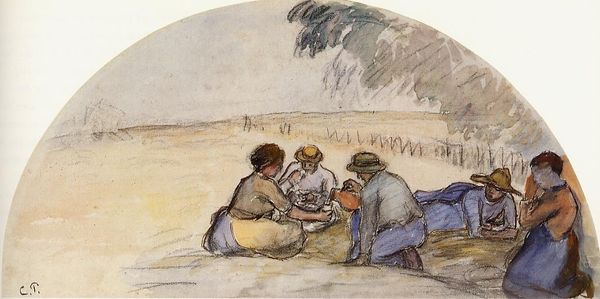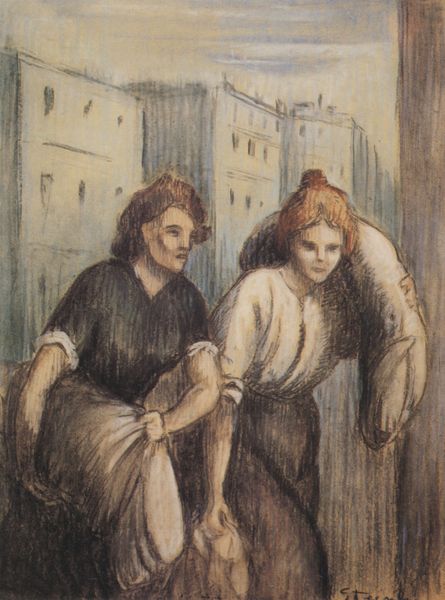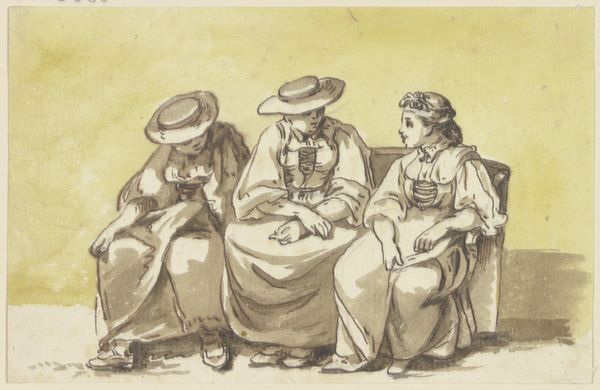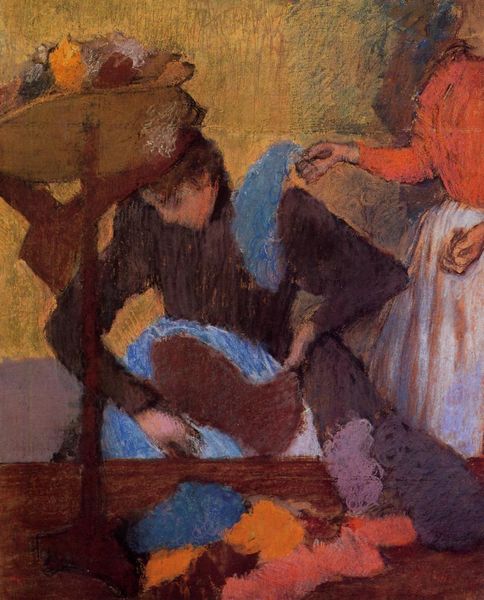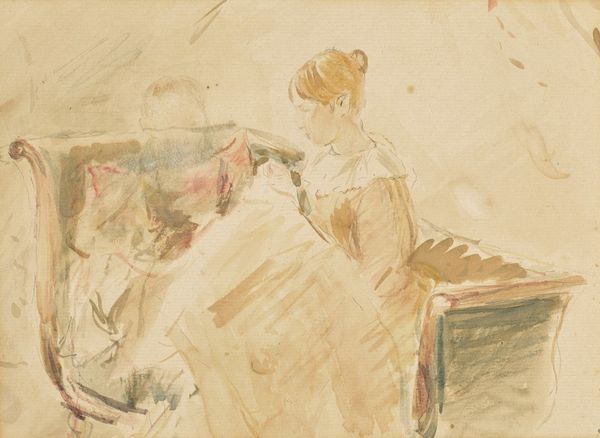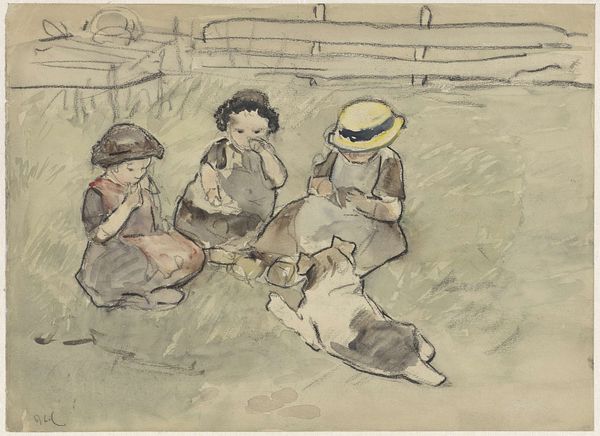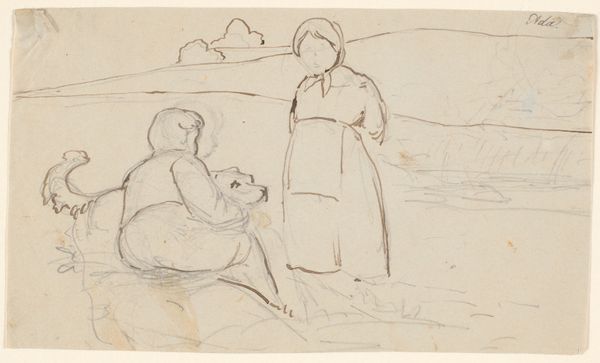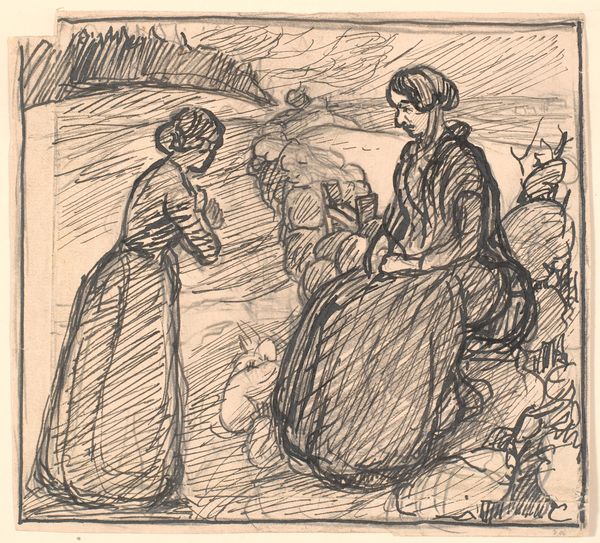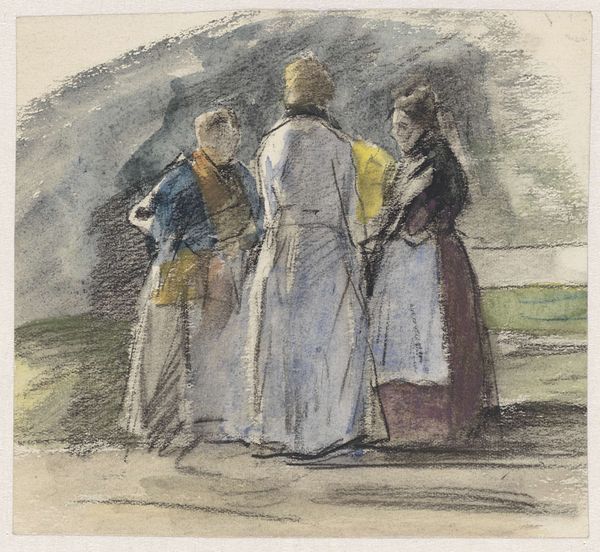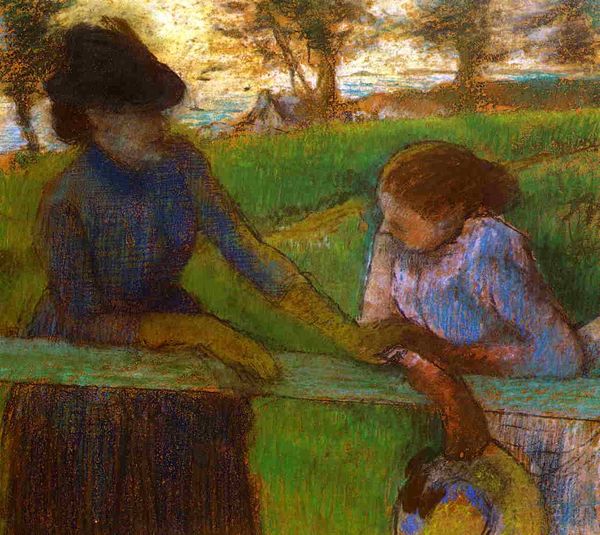
painting, plein-air, watercolor
#
portrait
#
painting
#
impressionism
#
plein-air
#
landscape
#
figuration
#
watercolor
#
group-portraits
#
genre-painting
#
watercolor
Copyright: Public domain
Camille Pissarro created this watercolor, Three Peasant Women, at the end of the nineteenth century. The artist captured a scene of rural life, three women in a field, their faces turned towards one another in conversation. Pissarro was a French Impressionist, and one of the few to come from a working-class background. He often returned to the subject of rural labor. The Impressionists were associated with the representation of modern life, which often meant depicting the lives of the emerging bourgeoisie. But some artists, Pissarro among them, were also interested in depicting the lives of those who worked the land. What did it mean to bring the realities of rural France into conversation with the project of modern art? As historians of art, we can look to archival sources, such as exhibition reviews, to see how contemporary audiences viewed such images. And we can bring insights from social history to bear on the interpretation of these scenes. What we find is that in the 1880s and 90s, such images participated in a wider cultural debate about the character of French society and the place of the peasant within the national story.
Comments
No comments
Be the first to comment and join the conversation on the ultimate creative platform.
